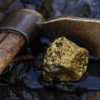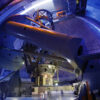Technology firms BridgeTech EO Inc. and Cybertiks UK Ltd. have partnered to create a revolutionary method for remotely processing and quantifying soil carbon sequestration.
The recent partnership is set to transform the field of soil analysis, bringing high-precision soil analysis and carbon capture metrics to the forefront of sustainable agriculture.
As people look into the future, the role of artificial intelligence in essential sectors such as mining or agriculture is set to become even more significant. With governments pushing for a carbon-free economy, the ability to monitor soil health and carbon sequestration in real-time will be critical.
United Kingdom-based Cybertiks, a leader in AI-powered soil analysis, and Edmonton-based Bridgetech, known for its agricultural expertise, have combined their strengths to create a tool that can change the industry.
“Our offering uniquely democratizes access to high-precision soil analysis and carbon capture metrics,” said Cybertiks CEO Jose Jafif. The partnership is set to redefine the standards of soil analysis by making it more accessible and efficient, he explained.
“We envision our technology becoming a fundamental part of sustainable agricultural practices, helping to optimize resource use, increase yields and reduce environmental impact,” Jafif added.

Soil sampling for carbon sequestration is the process of collecting and analyzing soil samples to measure the amount of carbon that has been captured and stored in the soil as a method to mitigate climate change. Photo via Government of Western Australia.
Read more: How artificial intelligence is transforming the mining industry: Cybertiks
Read more: Hecla Mining to use 3D mapping to improve production operations
Cybertiks technology allows carbon offset credits generation faster
Bridgetech Director Kale McMorris highlighted the efficiency of the partnership and the potential for generating carbon offset credits.
“Using Cybertiks technology allows Bridgetech to generate carbon offset credits by limiting time delays between yearly sampling and application of carbon credits,” McMorris said.
Bridgetech and Cybertiks are revolutionizing the sustainable agriculture industry by combining expertise and technology to provide extra value to the farmer and the environment, he added.
“The partnership provides carbon credits to farmers with limited farmer intervention in a timely manner. This carbon credit application method allows for credits based on direct measurement of soil carbon without time delays or human sampling error,” McMorris explained.
Looking ahead, McMorris sees the Cybertiks AI engine playing a significant role in generating actual carbon sequestration by innovative farming practices and marketing the offsets.
“This advanced technology provides added value to incentivize farmers to move toward more sustainable farming practices,” he said.
Cybertiks’ technology provides real-time, large-scale soil assessment without the need for intrusive sampling. The AI algorithm, at the heart of this technology, continuously learns and adapts, offering precision and predictive capabilities that traditional soil analysis methods can’t match.
Moreover, the technology measures carbon capture metrics, a feature that is the first of its kind in the soil analysis sector.

Some conventional techniques of soil sampling are labour-intensive and disruptive to the soil. Photo via Government of Western Australia.
Unlike conventional techniques that require labour-intensive and potentially disruptive physical soil sampling, this new approach uses remote sensing technology and artificial intelligence (AI). This allows for a much larger area to be covered in a shorter amount of time, providing a more efficient and scalable solution.
The AI algorithm continuously learns and adapts, offering a level of precision and predictive capabilities that surpass traditional soil analysis methods. This technology also enables real-time analysis, allowing changes in soil carbon sequestration to be monitored as they occur, which is a significant advantage for managing and optimizing carbon sequestration efforts.
Also, the non-intrusive nature of remote sensing means the soil ecosystem is not disrupted, unlike with physical sampling. An additional unique feature of this technology is its ability to measure carbon capture metrics, providing valuable data for carbon offset programs and other climate change mitigation efforts.
Read more: Artificial intelligence can pose a serious threat if unregulated: Ontario’s privacy commissioner
Read more: AI may outsmart people within two years, predicts U.K. government advisor
Partnership pushes boundaries of sustainable agriculture
This partnership has resulted in a proprietary method of multispectral imaging analysis, developed and commercialized by Cybertiks, which is utilized for remote soil sampling.
BridgeTech EO then processes the soil analytical data gathered through this method which allows for the quantification of organic carbon in the soil, a crucial factor in carbon sequestration.
The sampling and analysis are further enhanced by the integration of Life Cycle Analysis (LCA) and soil emission modelling software. The combined methodology is then applied to internationally recognized standards for emissions sequestration.
Once the methodology is in place, BridgeTech EO takes the reins in developing the project as per the specifications laid out by VERRA, a global leader in the establishment of carbon offset standards.
Upon completion of the project development, BridgeTech EO licenses a regional emissions verifier to validate the project and verify the emissions offset.
Following the verification process, VERRA steps in to process the verification and issue registered offset credits. Each credit is assigned a unique registration number, ensuring traceability and credibility. These credits can then be marketed internationally, providing a tangible and valuable asset that benefits each individual farmer directly.
The partnership between BridgeTech EO and Cybertiks marks a significant leap forward in the field of sustainable agriculture and carbon sequestration, offering a practical, efficient and reliable solution to generate real carbon sequestration value.
McMorris explained that the goal is to provide financial incentives to the farmers themselves, –who are the people that actually know how to manage and protect the land– and have earned this value through their years of hard work and land stewardship.
The generated credits owned by the farmers will spur innovation and adoption of sustainable agriculture, moving forward toward a better future for the agriculture industry as a whole.
Read more: Copper giant BHP uses Microsoft AI to improve copper recovery in northern Chile
Read more: Canada invests $15M in new mining technology projects

Cybertiks at the Geospatial World Forum 2022 that took place May 10-12, 2022 in Amsterdam, The Netherlands. Photo via Cybertiks.
The partnership with Bridgetech not only validates Cybertiks’ technology but also significantly broadens its reach in the soil analysis market. The companies say the collaboration is seen as a major step forward in the journey toward reshaping sustainable agriculture.
While the partnership is open to new collaborations, the immediate focus is on maximizing the potential of the partnership with Bridgetech. The companies are exploring possibilities for further refining their AI algorithms and expanding their range of analytics in the soil analysis sector.
Cybertiks is no stranger to applying artificial intelligence to complex projects. Its mining services use the thermodynamic information captured by electromagnetic sensors such as satellites, atmospheric balloons, drones, cameras, and radars among others to classify and quantify materials with quantum-enabled artificial intelligence for scale and speed.












